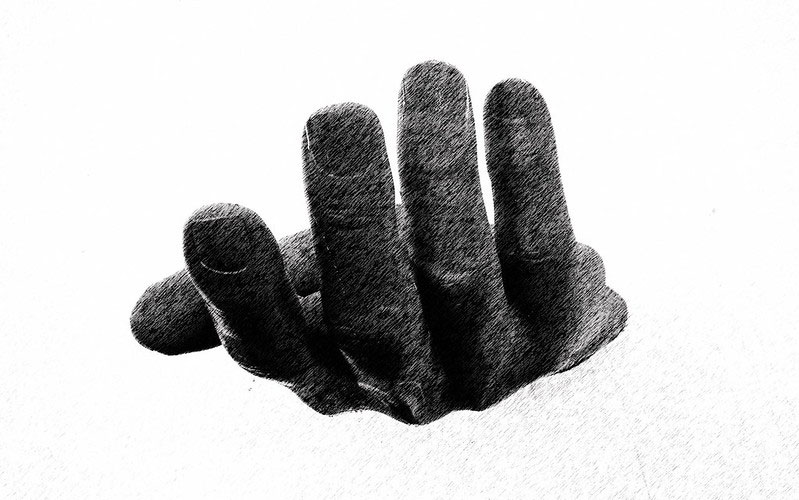
This article is adapted from the 7th edition of Fundraising for Social Change for the Grassroots Fundraising Journal. For the first part of this two-part article, originally published online on February 12, 2016, click here.
Materials for Major Gift Solicitation
In addition to the gift range chart and a list of prospects, three more elements need to be in place before your organization can begin to solicit major gifts: 1) what, if any, benefits you will give to major donors that are not available to other donors; 2) materials that describe your work and how to make donations; and 3) people to solicit the gifts.
Benefits: While helping the organization is the main satisfaction for the donor, an added incentive will show that you appreciate the extra effort the donor is making and will remind the donor of his or her gift to your organization. Ideal incentives should be meaningful without costing your organization very much—for example, free tickets to a special event your organization is hosting, a mug, or a book related to your work. There is no evidence that one kind of benefit works better than another, and there is some evidence that donors prefer more personal attention and more information about your organization rather than tangible benefits. Certainly, the benefit should not be very expensive. Under IRS law, any value of a benefit that exceeds the vague criterion of “token” is not eligible for the same tax deduction as the rest of the gift. For example, if someone gives $500 to an organization and receives an etching worth $50, the donor can only claim $450 of this gift on their tax return because $50 is more than a token amount. If the same group gave a T-shirt or tote bag worth little or nothing on the open market, the donor could claim the whole $500 as a tax deduction. The IRS is increasingly questioning expensive benefits for donors, and donors can be annoyed by having to remember that what they gave your organization is different from what they can deduct.
If you decide to have a benefit, the benefit should be easy to deliver, which is why many organizations use mugs or books (no color or size options, won’t get stale, etc.). Because of the number of items people commonly get for their gifts to public television, public radio, or major national organizations, a small organization should probably offer something that is related to its programs.
For example, an organization working for stricter controls on and alternatives to the commercial use of pesticides sends a short booklet on alternatives to pesticides for home gardens and indoor plants. An after-school program for inner-city children asks the teachers to save drawings students made and sends them to donors along with its thank you notes. This benefit is truly of token value, but it is very popular with donors. Now the organization has one day on which the children are asked to make “thank you” drawings. A public policy think tank has a monthly “briefing call” that donors can join. The policy director gives a short update on the policy issues the organization is working on, discusses pros and cons of different positions, and invites questions and comments. This is popular with some major donors and also gives the staff an early sign of what questions and comments a friendly audience might have about a particular policy position. What is nice about these kinds of benefits is that they can be extended to anyone who has gone above and beyond for the organization, including long time donors or faithful and reliable volunteers. A major donor program can be run successfully without giving any benefits beyond what are offered to all donors, such as the newsletter. This approach will only work if the donors are thanked personally and promptly and if the organization keeps in touch with them using the ways recommended in the section on renewing major gifts later in this article. Personal attention and information on what work the organization was able to do as a result of the donor’s gift will always be the most effective benefit for maintaining and upgrading your donors’ giving.
Descriptive Materials: It goes without saying that every organization needs a good, up-to-date website that delivers information through pictures, graphs and even short videos, in addition to text. But solicitors need some print materials separate from the website for major donors. Some organizations create a brochure aimed at a major donor audience, but many eschew that expense in favor of simple 8½-by-11 sheets of paper with “Frequently Asked Questions,” a copy of the gift range chart, and a list of what the money will buy. These documents are put into an attractive folder with a picture or the logo of the organization on the front. Each sheet lists the website so people can easily give online, but also has a return envelope for the many people still using checks. Because these materials will be used primarily in personal solicitation, they should focus on ways to make thoughtful gifts. For example, encourage people to make a monthly pledge, and describe the tax advantages of giving highly appreciated assets. The information in the packet is essentially a published, though perhaps condensed, version of your case statement. It also helps volunteer solicitors by giving them something to leave with a donor and to refer to if they forget some information they meant to impart. Make sure all your print materials are completely clear about how to give and encourage the donor to visit you online.
Solicitors: Finally, you need to have a core group of people willing to do the soliciting. Some of these people should be members of the board of directors, but the board’s work can be augmented by a group of volunteers. These people should be trained in the process of asking for money, but they do not need previous experience in asking for major gifts, nor do they need to know many prospects personally. But they must be donors—ideally, major donors—themselves.
Keeping in Touch with Major Donors
One of the most frequent complaints from major donors is that organizations treat them like ATM machines—they punch in the amount they want and then walk away until they need money again. Keeping donors interested in your group requires showing some interest in the donor, particularly some interest in why the donor supports your group. To give major donors this extra attention takes work, but it is work worth doing for several reasons: first, because it is courteous; second, because it brings donors closer to the work of your group, making them potential activists or advocates; and third, because it will bring in more money. In addition to when you ask major donors to renew their gifts, you should be in contact with them two or three times a year. You will want to be in touch with some donors more often than that, depending partly on the size of their gift and mostly on their personality and expressed level of interest. Remember that major donors are a good source of feedback, advice, and volunteer energy, as well as a source of other major donors.
There are several easy ways to keep in touch that make major donors feel personally appreciated that do not require much time or money. You can choose from the suggestions here or develop your own system, but be sure to get a system in place.
- Send a holiday card in December.The card should wish the donor happy holidays and be signed by the chair of the board, a board member with a personal relationship to the donor, or a staff person. If possible, write a brief note on the card. The card goes alone—no return envelope, no appeal letter. (You may also send major donors a year-end appeal in a separate mailing.) Unless your organization is religiously identified, make sure the card (and even the postage stamp you choose) has no religious overtones, including cultural Christian overtones such as Santa Claus, elves, or Christmas trees. Even if your relationship to the donor is entirely online, send a printed card if you have a street address. Very few people dislike getting personal mail, and many who grew up with “snail mail” miss the personal notes and letters than have been replaced by email.
- Attach a personal note to your annual report or a personal email with a link to the report on your website.All donors should receive a copy of your annual report. You can put it on your website and send an email with a link to the report and a brief note thanking donors for all they have done to make the work reflected in the report possible. The major donors with whom your correspondence is by mail will need to get a printed copy of the report and a personal note. The note can be on a Post-It and does not have to be long. It can say something like, “Thought you’d be interested in seeing this year’s report since you have been so important to our success,” or, “I hope you are as proud of our work as we are—your gift helped make it possible.” It doesn’t matter if you don’t know the donor—a personal note shows that they are appreciated. If you know that something in your report will be of particular interest, note that. For example, “Paul, that program you asked about is featured on page five,” or, “Fran, check out the photo on the back inside cover.” Staff usually write these notes, but again, board members with relationships to these donors can write them as well. Note in your paper report that the report is also posted on your website, and encourage donors to send that link to friends and colleagues. The paper copy may well grace the coffee table or magazine rack in the waiting room of an office. The annual report is a very important piece of communication. Even the smallest nonprofit should budget some money so that the report looks attractive, has some photos, and is well written and laid out.
- Report successes during the year.If you have positive press coverage, if you win a victory in your organizing or litigation efforts, if you are commended by a community group, service club, or politician, take the opportunity to send a special letter to major donors telling them of the event. If possible, include a copy of the article or commendation. This letter does not have to be personalized.
- Note a donor’s accomplishments.If you learn that someone graduated from college, won an award, or had a baby, send a card. Don’t spend a lot of time trying to learn this kind of information, but pay attention and respond when the information comes your way. Although not an accomplishment, if you know a donor’s birthday, you can send a card then too. If you have your donor’s email address (and you should), you can send e-cards to save postage.
- Include brief personal notes with all mailings.You can include a brief note with anything major donors will be getting anyway, such as invitations to special events or announcements of meetings.
- Include major donors in some general mailings.Although you will probably not send major donors all the requests for extra gifts that are sent to the rest of your donor base, include major donors in mail appeals that are particularly timely or about specific issues that will be interesting to them. You can always put a Post-it on the mailing that says, “This is just FYI.” The same goes for e-appeals: The subject line for major donors can be “Just FYI.”
- Just send a quick email.You will be in touch with many of your major donors by email when you are requesting a renewal. So that your email is not always about money, from time to time, drop them a brief note or forward something that you think they will be interested in seeing.
By keeping in touch with your major donors, you will lay the groundwork necessary to approach them for a renewal of their gift in the second year they give and a request to increase the size of their gift the third year of their giving. Even if no one in your organization has ever met this major donor and their gift came unsolicited, you will begin to build a rapport that will enhance the interaction when you meet the person in the future.
Renewing Major Donor Gifts
The process for approaching major donors to renew their gifts will vary depending on the amount they have given. This section describes how to ask for renewals of various size gifts.
Gifts of $250–$499
Although these gifts are not technically major gifts for most groups, these donors may be stretching to make them and need a little more personal attention than smaller donors. Near the anniversary of the donor’s gift, send an email (or letter) asking them to give again. In the email, describe the highlights of the year just passed and attribute some of that success to the donor’s gift. Wherever possible, use stories to illustrate your work rather than simply narrating one dry fact after another. One paragraph should be devoted to the needs of the coming year. The next paragraph asks the donor to renew their gift. The letter should ask for the same size gift as the donor gave the previous year, which both reminds the donor of the amount of their last gift and shows that your organization keeps careful records. Offer to talk if the donor would like, and include the link to the website so the person can give online. If you have sent a letter, then include a reply device and return envelope.
Gifts of $500–$999
Use the format for gifts up to $500, but follow your letter or email with a phone call within 10 days. In the letter, let the donor know you are going to call.
The phone call will go something like this:
“May, this is June calling to follow up on my letter.”
Sign up for our free newsletters
Subscribe to NPQ's newsletters to have our top stories delivered directly to your inbox.
By signing up, you agree to our privacy policy and terms of use, and to receive messages from NPQ and our partners.
“Yes, June. It’s lovely of you to call. I’ve already sent in my check—and congratulations on your good work.”
June can then thank May for renewing her gift and ask if she has any other questions or tell her something that wasn’t in the letter (but be brief!). The whole interaction will not take more than five minutes unless May has some questions. June will very likely get May’s voicemail, and her message will be essentially the same, “May, this is June calling to follow up on my email. I just wanted to thank you again for your support last year, and ask you to consider giving again this year. I will try you again on Wednesday.” After two attempts, return to email and say, “Dear May, Would love to talk with you about our work, but I know you are really busy. Do you have any 10-minute windows in the next day or two?” Many times these interactions will be completed by email, with May responding, “I am drowning in work but want to help. Remind me in a month.” If used well, email is a great boon to donor solicitation.
Gifts of $1,000 or More
Send a much briefer letter telling the donor you would like to visit with them and that you will phone to set up a time. If you are simply asking for a renewal, the telephone request for a meeting will often go like this:
“Frank, this is Ernest. Did you get my letter?”
“Yes, it came yesterday.”
“Great. Can we get together sometime to talk about the possibility of you renewing your gift?”
“You don’t need to visit me for that. I’ll be happy to renew.”
In this exchange, even though he is planning to renew his gift, Frank may still feel pleased that he was given this attention; again, the interaction is very brief. If Frank does want to meet, he will be drawn even closer to the organization and you will have a chance to see how your group appears to someone who is thoughtful about how much money to give you.
Some major donors, particularly those who live far away from the organization, prefer email to phone follow-up, and your entire conversation may be done by email.
When to Ask for More
Two questions often arise: How many times should you ask donors to renew their gift at the same amount before asking for an upgrade? And similarly, once the gift is upgraded, what is the appropriate amount of time before asking for another upgrade? The answer to both questions is simple: Know your donor. The sooner you meet the donor and learn more about them, the sooner you will have a sense of whether they like to be visited, whether they are giving to their capacity and cannot give more right now, whether they would rather make up their own mind about when and how to increase their gift, and so on.
Of course, you can’t know all your major donors right away, and some you may never meet. When you don’t know, follow this formula: Get the gift; the following year, ask for a renewal; the third year, ask for an upgrade. If you receive a larger gift after asking for an upgrade, ask for a renewal of that gift the following year, and the next year ask for a gift that is larger by one-third. Then repeat the cycle: For a couple of years ask for a renewal and then another upgrade, and so on. If the donor stays at the same level, keep asking for more unless you get information that the donor is giving as much as he or she can afford.
In addition to this formula, use common sense. If someone gives you $5,000, you may need to wait to ask for a renewal for several years before asking for more. If someone gives you $250, then ask them to double their gift. On the other hand, think twice before asking someone giving $10,000 to double. You can always add the phrase “or more” onto any request you make if you really don’t know how much more to ask for.
Of course, your organization must be able to justify needing more money, and that need must be expressed to the donor in a compelling way by putting it into programmatic terms. Hiring another staff person, for example, is not compelling; serving 20 more children (what the additional staff person is needed for) is.
The Hardest Year
In planning to add a major gifts component to your fundraising, keep in mind that the first year of recruiting major donors may be the hardest. Do not set your goals too high; you don’t want volunteers to be demoralized by failing to reach an unrealistic goal. Major gifts solicitation can be done in the form of a campaign—that is, with a formal beginning and ending time, specific materials, and a special committee, or it can be an ongoing program, with different volunteers helping at different times. The most important step to take in a major gifts program is to start. Even if you have only one prospect, ask that prospect. If the largest gift you can imagine someone giving is $250, start by asking for $250. A major gifts program builds on itself; simply establishing the groundwork for the program will begin the process of getting major gifts.
This article was published in its original form on January 21st, 2016, at the Grassroots Institute for Fundraising Training’s blog.











